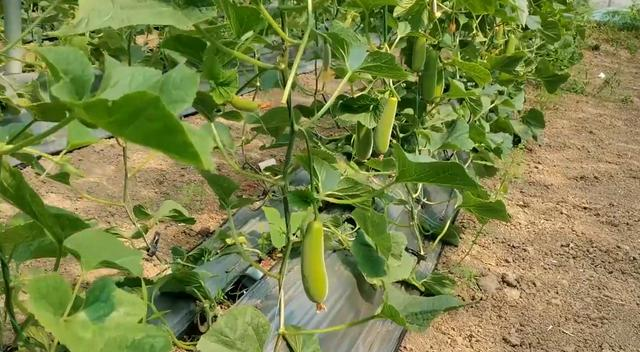Planting melons and fruits in the planting growth bags, one detail is done correctly, reducing diseases and pests, and it is very easy
Planting muskmelon this year, all of the soilless cultivation methods used in the greenhouse. Earthworm dung and cow dung were used as substrate, planting bag as planting tank, and two seedlings were planted in one bag. The planting bag is covered with a film, which can not only prevent pests, weeds, such as whitefly, aphids, but also play a role in heat preservation.
Many friends ask, after planting bags row by row, the middle of the open space should also be covered with plastic film, so as to prevent weeds, soil-borne diseases and insect pests?
Soilless cultivation and soil planting in agricultural management are also very different. When growing vegetables in soil, some ridges and ridges will be completely covered with plastic film, reduce humidity in the shed, but also weed control. However, in soilless cultivation, not all plastic films can be obtained, for several reasons:

First, soilless cultivated vegetables, when watering requires small water frequently watered, excess water will be discharged through the bottom of the planting bag holes, flow into the soil. If the soil is all covered with plastic film, the water from the planting bag will not be discharged, which will bring inconvenience to the daily management. Therefore, in soilless cultivation, film must not be used to cover all the ground.
Second, if vegetables want to grow normally, they should have suitable soil moisture and air humidity to ensure the normal respiration of roots and leaves. For example, when the humidity of soil or substrate is too high, rotten roots and retting roots appear. When the humidity in the shed is too high, it is prone to diseases, such as downy mildew and vine blight.
After soil planting and watering, the wastage rate of water and fertilizer is high, and the moisture in the soil will rise to the air, resulting in the humidity in the shed is higher, and the humidity will be reduced after covering the film. In soilless cultivation, the utilization rate of water and fertilizer is high and the humidity in shed is low, which is an advantage in winter planting and can reduce the occurrence of diseases. However, if the soil in the shed is covered with film again, the air humidity may be too low, the respiration of leaves is weak, and the aging rate of plants will be accelerated.
Therefore, we can not cover all the film in soilless cultivation, so that when the air humidity is less than 60% for a long time, we can water at intervals to improve the water content of soil, so as to improve the humidity of air and ensure the normal growth of vegetable plants.
Combined with the above two aspects, in the process of soilless cultivation, the planting bag can be covered with a layer of film, and the soil between rows does not need to be covered. Although this is a matter of detail, it is hoped that farmers who have just begun to learn soilless cultivation can avoid this mistake. This can not only penetrate the excess water into the soil, but also improve the humidity of the air, but also do not have to worry about the occurrence of soil-borne diseases.
If in order to prevent weeds in the field, you can cover a layer of grass-proof cloth, on the one hand, to prevent excessive weeds, and very beautiful. On the other hand, grass-proof cloth can breathe, so that dew or excess water deep into the soil, but also improve air humidity.


